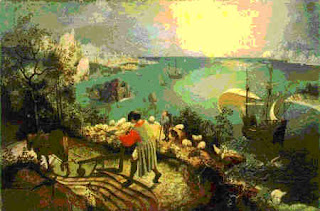We’ve had some milk go sour at home this week. Something I’m sure almost all of you have had happen to you. Of course I won’t throw it away. I’ll find a way to use it. I don’t believe in wasting anything that you can use. But it’s started me thinking about a bit of food history.
There are dozens of old recipes that call for sour milk. Part of the reason is that before refrigeration, when the cows were producing a lot of milk, then you had to find a way to use it up. Cheese (“milk’s leap to immortality”) was one result. Milk didn’t keep very long before going sour.
But using sour milk wasn’t only a way of using up food resources that you couldn’t afford to lose. It was actually necessary to make certain kinds of breads. Back in the good old days, before sliced bread and preservatives, if you wanted bread then you had to make it. Everyone wanted bread, it was one of the basics of life, and it had the advantage that, in the form of flour, it could be stored indefinitely (or until the weevils got into it). Making yeast bread, though, is a big effort and somewhat unpredictable. You have to proof the yeast, mix and knead the dough, let it rise, punch it down, and then let it rise again before you can bake it. Even if everything goes well, the process takes a couple of hours and you can’t wander away while it’s going on, although you can do other work and check back from time to time. The results depend on the temperature, the humidity, the amount of moisture in your flour and dozens of other unpredictable factors.
Contrary to family histories, most of your great-great-grandmothers probably couldn’t make very good yeast bread consistently. Ingredients weren’t uniform and trying to get an even heat in a wood stove for baking is extremely difficult.
Even the hardest working cook (almost always women in the early days of this country) would find it difficult to make yeast bread every day. This is especially true when you think about how difficult it was to do all the other every day tasks by hand—laundry, making butter, making soap, etc. There just wasn’t time. In Europe and the larger and older cities in the United States you could buy your bread from the baker. Many of the traditionally homemade bread that we have were only made once per week—on the baker’s day off. But on the frontier and in the small towns of America, there wasn’t a baker, so you were on your own.
The salvation of many cooks was “quick bread”. That’s bread that is leavened by use of a “mechanical” leaven rather than yeast. The earliest quick breads were leavened with ashes. But wood ash (at least the one time I tried it) leads to a heavy, dense loaf
that tends to taste gritty. Baking soda was an enormous step forward. It’s pure sodium bicarbonate and when combined with moisture and an acid, baking soda releases carbon dioxide and causes rising.
If you try to make soda bread with regular milk, it won’t rise. The milk is not acidic enough. But if you use sour milk, than the baking soda will react with the acid in it and you can make a nice chewy loaf that rises. Of course there are other sources of the acid you need to combine with baking soda to make bread, but for our forefathers sour milk was no reason for worry. Sour milk meant soda bread (yes, I’m Irish by descent) and that was a good thing.
The next time you have milk go sour don’t throw it away. Think of your ancestors and the nutrition they got from bread made from sour milk. Nutrition important enough so that if they had thrown out sour milk; they may not have survived and you might not be here today. Instead, in their honor, make yourself a loaf of soda bread. Here’s a recipe:
Irish Soda Bread
3 cups white flour
2 cups whole wheat flour
2 teaspoons baking soda
1 tablespoon baking powder
2 tablespoons brown sugar
2 ¼ cups sour milk (you can also use buttermilk)
Mix all the dry ingredients together, then add the sour milk all at once. Stir the ingredients with a wooden spoon until just mixed. Turn out and knead for a brief moment. Divide the dough into two round loafs, place each on a baking sheet and let rise for ten minutes. Slash a cross in the top of each loaf in honor of St. Patrick and bake in a 400 degree oven for about forty minutes. It’s best eaten within a day, and even better eaten with sweet butter while it’s still warm.
P.S. Not all milk that has gone bad is sour milk. Make sure you know the difference between “soured” and “spoiled”.
 Landscape with the Fall of Icarus Pieter Breughel c. 1558; Oil on canvas, mounted on wood, 73.5 x 112 cm; Musees royaux des Beaux-Arts de Belgique, Brussels
Landscape with the Fall of Icarus Pieter Breughel c. 1558; Oil on canvas, mounted on wood, 73.5 x 112 cm; Musees royaux des Beaux-Arts de Belgique, Brussels







